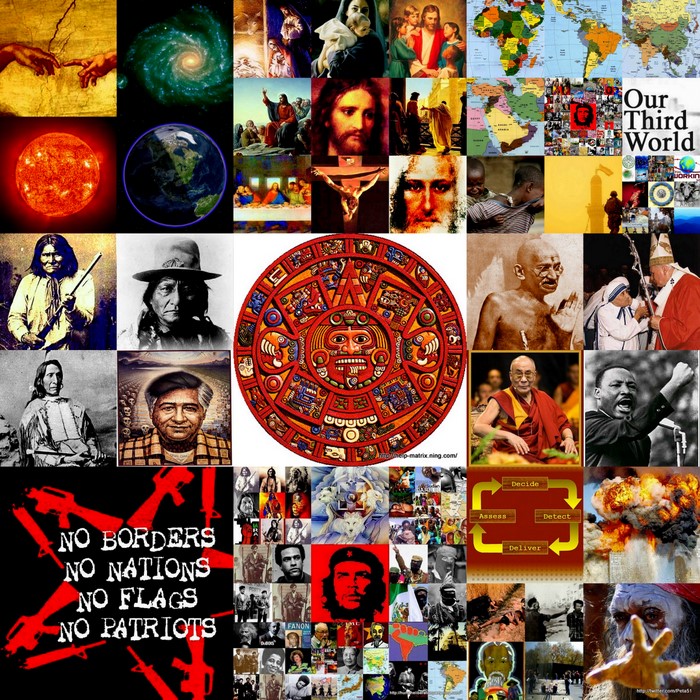CBC |
Posted: 01/08/2013 4:56 am EST

Idle No More, Idle No More Protest, Theresa Spence, Cbc, Idle No More Economic Equality, Idle No More Grassroots, Idle No More Like Occupy, Idle No More Movement, Idle No More Occupy, Idle No More Occupy Movement, Occupy Idle No More, Canada Impact News

As Idle No More protests continue to grow, comparisons are being made to the grassroots Occupy Wall Street movements that sprang up across the globe in 2011 and helped fuel public discourse on the issue of economic inequality.
But while that issue, if not the Occupy movement itself, found a receptive audience among many, including many Canadians, it is not clear that a protest dedicated solely to aboriginal issues will have a similar impact or spur any kind of change.
"The Occupy and Idle No More movements share two characteristics," says Robert Brym, a sociology professor at the University of Toronto, via email. "They both have relatively diffuse demands and decentralized leadership."
But he goes on to say that they also differ in one important respect. "The Occupy movement's demand for greater economic equality seems to have resonated with a large part of the Canadian population, which has experienced growing income disparity and slow growth in real income for decades …
"In contrast, I believe the public has more mixed feelings about the Idle No More movement."
In some respects, the two movements were born out of similar circumstances and have similar themes, relying also on young activists and social media to carry out their message.
Denis goes on to note that, like the Occupy movement, Idle No More "upholds a general set of values around social and environmental justice that many believe are being violated by our current political and economic systems.
"No doubt, some of the Occupy activists are also participating in Idle No More."
But Denis said that, unlike Occupy, Idle No More has been more consistent and concrete in its core messages, adding that the movement was triggered by eight specific pieces of federal legislation that affected First Nations directly.
"Like Occupy, then, the long-term vision is to transform relationships and build a fairer, healthier, more sustainable society," he says. "But Idle No More activists have been clearer in identifying concrete actions that can be taken right now to put us on that path."
For example, Idle No More has laid out its objections to a specific piece of legislation, Bill C-45, the federal government's huge budget implementation law that made changes to the Indian Act, Navigation Protection Act and Environmental Assessment Act at the same time.
Vincent Mosco, a sociology professor at Queens University, agrees there is more specificity to the Idle No More protests because of the focus on aboriginal concerns.
"In the Occupy movement," he says, "it was more the 'one per cent and the 99 per cent' and you take it from there, wherever you want to go. To emphasize one thing as opposed to another may have led to disagreements, so the idea was everyone expresses their point of view."
Idle No More activists are "operating on a strategy of going after different points that might call attention to the movement — shutting down one Via Rail line or another line, occupying one area or another area — short-term occupations that make it more difficult for those in authority to organize a response.
"That I think is more effective than the Occupy strategy," Mosco says.
While Occupy's stay-put strategy was effective in the short term, Mosco says "there was no doubt that it could not last for the long haul, and it didn't for the simple reason that, while they were occupying public places, they were places that other publics wanted to make use of."
Some may believe it's just a matter of time before the Idle No More movement fizzles out, much like the Occupy movement did after its main focal point, Manhattan's Zuccotti Park, was cleared by police in November 2011.
But Mosco, for one, rejects the characterization that the Occupy movement just faded away, saying its proponents believed they had accomplished their main goal.
"Certainly in the U.S, and to a lesser degree in Canada and overseas, the issue of income inequality landed with a thud in the centre of political debate," he says. "I was struck by the amount of discussion about social class and income inequality.
"These are terms that are not tossed around in the U.S outside of academic debate."
Indeed, with the recent "fiscal cliff" deal in Congress, which saw taxes raised on high-income earners, the Occupiers may have cause to claim victory.
As for Idle No More, Mosco says he believed the protests will continue for a number of months but will reach a point where its continuing strength will depend on how Canadians outside the movement respond.
At the University of Toronto, Brym notes that while many Canadians are sympathetic to the plight of aboriginal Canadians, many are also troubled by reports of corruption and mismanagement that surface periodically.
"My sense is that the average Canadian taxpayer is willing to compensate for past and current injustices but is reluctant to support disruptive demonstrations that demand more funding with little accountability attached. Hence the ambivalence."
Please see Original Websource for Video and stuff >
http://www.huffingtonpost.ca/2013/01/08/idle-no-more-occupy_n_2430122.html#slide=1949237
Comment: This is an important question. #OWS is its own phenomena. Certainly various movements trigger and stimulate eac other, but we cannot simply throw them all into one bag. Was #OWS a new Arab Spring? We need to remember that slavery, oppression and state-sponsored tyranny has been around a long time. Remember the Roman Empire? ~ @Peta_de_Aztlan
++++++++++++++++++++++++++++++++++++++++
HELP-Matrix Humane-Liberation-Party Blog ~ http://help-matrix.blogspot.com/ ~
Humane-Liberation-Party Portal ~ http://help-matrix.ning.com/ ~
@Peta_de_Aztlan Blog ~ http://peta-de-aztlan.blogspot.com/ ~ @Peta_de_Aztlan
+++++++++++++++++++++++++++++++++++++++++

But while that issue, if not the Occupy movement itself, found a receptive audience among many, including many Canadians, it is not clear that a protest dedicated solely to aboriginal issues will have a similar impact or spur any kind of change.
"The Occupy and Idle No More movements share two characteristics," says Robert Brym, a sociology professor at the University of Toronto, via email. "They both have relatively diffuse demands and decentralized leadership."
But he goes on to say that they also differ in one important respect. "The Occupy movement's demand for greater economic equality seems to have resonated with a large part of the Canadian population, which has experienced growing income disparity and slow growth in real income for decades …
"In contrast, I believe the public has more mixed feelings about the Idle No More movement."
In some respects, the two movements were born out of similar circumstances and have similar themes, relying also on young activists and social media to carry out their message.
'Both diffuse grassroots movements'
"They are both diffuse, grassroots movements with no central organizing structure," Jeffrey Denis, assistant professor of sociology at McMaster University, wrote via email. "Although there have been distinct triggers and key organizers in different regions, like Occupy, Idle No More has taken on a life of its own and it is difficult to keep track of all the events.""No doubt, some of the Occupy activists are also participating in Idle No More."
But Denis said that, unlike Occupy, Idle No More has been more consistent and concrete in its core messages, adding that the movement was triggered by eight specific pieces of federal legislation that affected First Nations directly.
"Like Occupy, then, the long-term vision is to transform relationships and build a fairer, healthier, more sustainable society," he says. "But Idle No More activists have been clearer in identifying concrete actions that can be taken right now to put us on that path."
For example, Idle No More has laid out its objections to a specific piece of legislation, Bill C-45, the federal government's huge budget implementation law that made changes to the Indian Act, Navigation Protection Act and Environmental Assessment Act at the same time.
Vincent Mosco, a sociology professor at Queens University, agrees there is more specificity to the Idle No More protests because of the focus on aboriginal concerns.
"In the Occupy movement," he says, "it was more the 'one per cent and the 99 per cent' and you take it from there, wherever you want to go. To emphasize one thing as opposed to another may have led to disagreements, so the idea was everyone expresses their point of view."
Differ in protest tactics
The two movements also differ in their protest tactics. Occupy groups chose to occupy spaces indefinitely, whereas the Idle No More protests, for the most part, have set up temporary blockades and flashmob-type events like round dances in shopping malls and city centres.Idle No More activists are "operating on a strategy of going after different points that might call attention to the movement — shutting down one Via Rail line or another line, occupying one area or another area — short-term occupations that make it more difficult for those in authority to organize a response.
"That I think is more effective than the Occupy strategy," Mosco says.
While Occupy's stay-put strategy was effective in the short term, Mosco says "there was no doubt that it could not last for the long haul, and it didn't for the simple reason that, while they were occupying public places, they were places that other publics wanted to make use of."
Some may believe it's just a matter of time before the Idle No More movement fizzles out, much like the Occupy movement did after its main focal point, Manhattan's Zuccotti Park, was cleared by police in November 2011.
But Mosco, for one, rejects the characterization that the Occupy movement just faded away, saying its proponents believed they had accomplished their main goal.
"Certainly in the U.S, and to a lesser degree in Canada and overseas, the issue of income inequality landed with a thud in the centre of political debate," he says. "I was struck by the amount of discussion about social class and income inequality.
"These are terms that are not tossed around in the U.S outside of academic debate."
Indeed, with the recent "fiscal cliff" deal in Congress, which saw taxes raised on high-income earners, the Occupiers may have cause to claim victory.
As for Idle No More, Mosco says he believed the protests will continue for a number of months but will reach a point where its continuing strength will depend on how Canadians outside the movement respond.
At the University of Toronto, Brym notes that while many Canadians are sympathetic to the plight of aboriginal Canadians, many are also troubled by reports of corruption and mismanagement that surface periodically.
"My sense is that the average Canadian taxpayer is willing to compensate for past and current injustices but is reluctant to support disruptive demonstrations that demand more funding with little accountability attached. Hence the ambivalence."
Please see Original Websource for Video and stuff >
http://www.huffingtonpost.ca/2013/01/08/idle-no-more-occupy_n_2430122.html#slide=1949237
Comment: This is an important question. #OWS is its own phenomena. Certainly various movements trigger and stimulate eac other, but we cannot simply throw them all into one bag. Was #OWS a new Arab Spring? We need to remember that slavery, oppression and state-sponsored tyranny has been around a long time. Remember the Roman Empire? ~ @Peta_de_Aztlan
++++++++++++++++++++++++++++++++++++++++
HELP-Matrix Humane-Liberation-Party Blog ~ http://help-matrix.blogspot.com/ ~
Humane-Liberation-Party Portal ~ http://help-matrix.ning.com/ ~
@Peta_de_Aztlan Blog ~ http://peta-de-aztlan.blogspot.com/ ~ @Peta_de_Aztlan
+++++++++++++++++++++++++++++++++++++++++


No comments:
Post a Comment
Please keep comments humane!